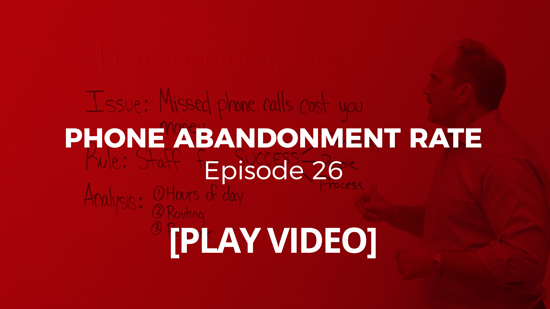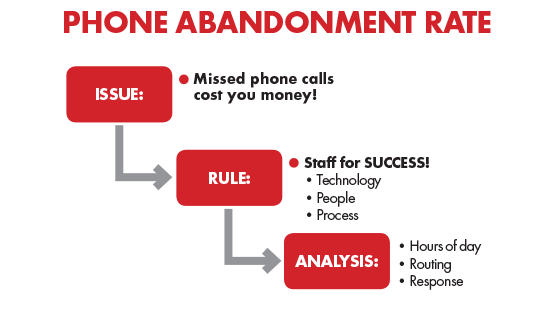This becomes a problem for your practice because, in today’s market, in about two seconds a client can find another provider for the services they want. If you’re able to increase the amount of calls you answer, you’re able to increase your profit margins. In order to mitigate this problem, make sure you have your staff trained for success by using:
- Technology – phone trees and various other programs exist to help you keep in contact with the clients who call you.
- People – Leverage your human staff.
- Process – Make sure you have a company policy on answering the phone.
Utilizing Technology
New patient acquisition is the ultimate goal of your practice, and, in the same way, is the end goal of your technological use. The first option to keep a consumer on the line is to use phone routing. For those who don’t know, phone routing systems are the automated messages that play when you call a practice.
The first thing you should have the automation ask is whether or not the caller is a new patient. Since this is a new business opportunity, they should be immediately connected to the appropriate people in your office.
Based on the call volume in your office, you should set up a list of phone responders, so if the first person doesn’t pick up the call, it automatically rolls to the next person in the chain. Give yourself back-up by utilizing the phone tree technology.
You need to make sure you have a system in place to get new patients and existing patients who want to schedule appointments, talking to a human as fast as possible.
Staffing
You must be staffed appropriately to handle the volume of calls you’re receiving. The challenge with handling call volume is that you must pay attention to the time of day the calls come in.
Specifically, you will likely receive the highest volume of calls on Monday and Tuesday, with the peak ending roughly on Wednesday afternoon. However, the call volume on any particular day will likely look like this: a low quantity of calls in the morning with an influx coming in during the early afternoon, and then going down again near closing time.
This is a function of consumer behavior; it is universal across the country. Studies of client behavior show clients are calling you on their morning commute to work, during their lunch break, and on their way home after a long day.
Knowing this, you need to have your staff ready to handle the influx of calls coming in at these times. Your staff must also understand your abandonment rate so that, when you miss calls during the day, you can add staff to support routing technology.
Process and Response
Every new patient phone call should be handled the exact same way, every time, so you can measure your key performance indicators and make sure your process is consistent. When it’s done the same way every time, if you have a problem in your key performance indicators you can make adjustments accordingly.


















